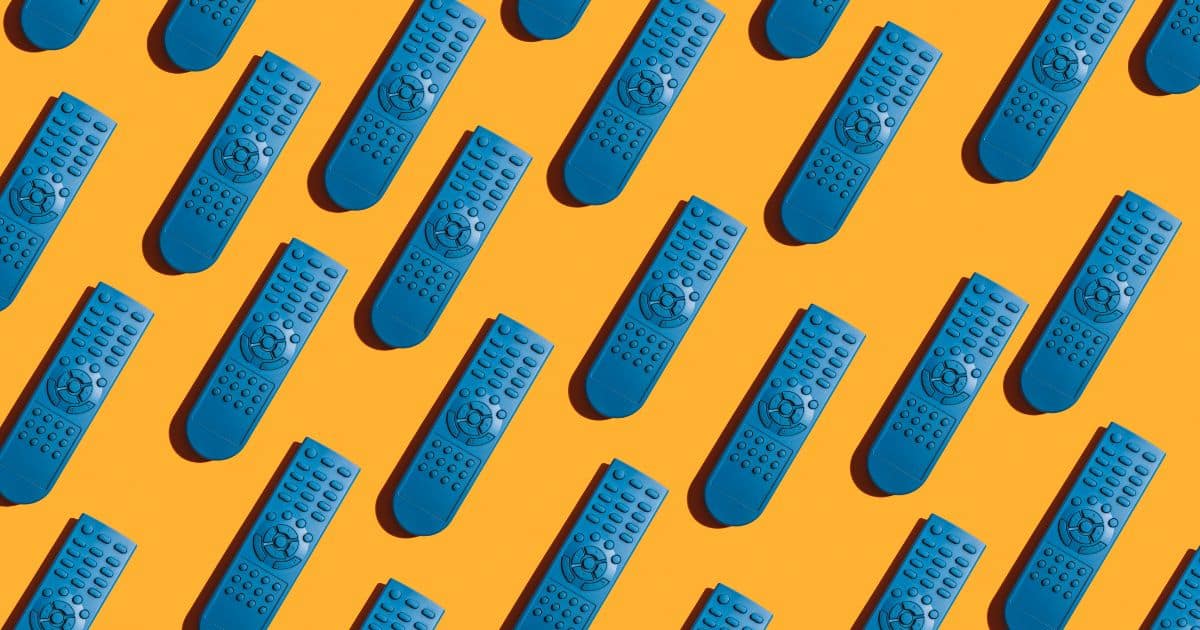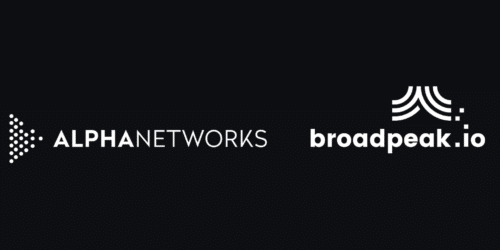As mentioned in the previous blog in the Targeted TV Advertising blog series, advertisement budgets are increasingly being redirected to the connected TV advertisement.
But what exactly is connected TV advertisement? The whole ad industry seems to be somewhat confused about what connected TV advertisements entail, as it is often also linked with over-the-top (OTT) advertisements.
The Media Rating Council (MRC), in coordination with the iAB, published a document that finally brings clarity in this area. From the MRC diagram shown below, it is evident that the term OTT is used to cover video advertisements delivered to secondary and primary screens, where the main screen matches the TV and secondary screen with the desktop, mobile, and tablet screens.
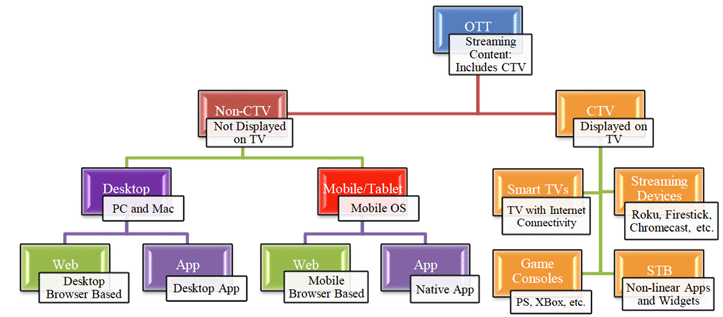
It should be noted that the OTT category per the MRC defines the ad video is delivered using streaming technology, more specifically adaptive bitrate (ABR) streaming using protocols like Apple HLS or MPEG DASH.
Consequently, the CTV category encompasses the following device categories:
- Smart TVs, such as Samsung Tizen, LG Web OS-based TVs, etc.
- Streaming devices and HDMI dongles, such as Amazon Fire TV, Roku, Apple TV and Google Chromecast, etc.
- Game consoles, such as PlayStation, Xbox, etc.
- Operator STBs, including those able to receive ABR streamed video, either pure OTT/ABR or hybrid STBs.
Programmatic TV
Besides the device categories, it is also important to stress that the attractiveness of the connected TV advertising segment stems from the fact that we leverage the same programmatic advertising technology that helped scale digital advertising.
Consequently, we see that TV service providers make their ad inventory available via the same programmatic infrastructure. In this context we increasingly talk about programmatic TV advertising.
Programmatic TV uses the same ad technology, as discussed in the section on Programmatic Selling & Buying, which consists of a chain from the sell-side platform (SSP) through an ad exchange toward a demand-side platform (DSP) and trade desk. Finally, the ad is offered for purchase to agencies and advertisers. The only difference is the ad creative, which is delivered in a high-quality video mezzanine format suitable to be transcoded and seamlessly inserted into the main video program.
However, as you can see from the picture below, we are only at the beginning of what is called DSP traded CTV (buy side), as it currently represents $9.5 billion, or roughly 7% of the total spend on TV advertisements. Some regions, like the U.S. where targeted advertisement has been implemented a bit longer, are currently seeing 15% programmatically traded inventory, and this is expected to reach 25% over the next five years.
Although advertisers are familiar with the programmatic approach from the digital advertisement, they are still quite reluctant to programmatically buy ad inventory for their TV campaigns because of brand safety concerns and a general lack of trust for the full end-to-end chain. Consequently, like for traditional broadcast ads, the bulk of the CTV inventory is sold in the direct sales way (i.e., hand sold).
However, the CTV inventory is much larger than traditional broadcast. Therefore, we generally see that the inventory once sold and prepared is targeted and inserted programmatically (i.e., programmatic delivery).
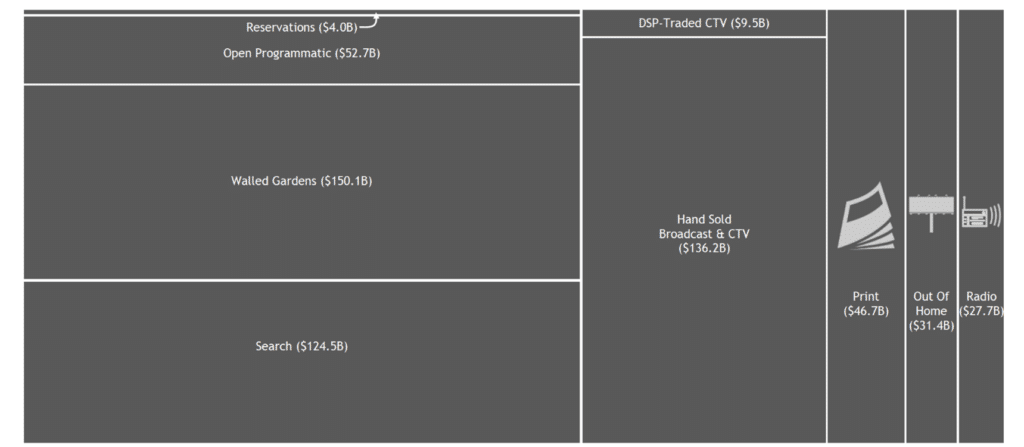

Programmatic TV Delivery
Within the connected TV advertisement space there are two distinct approaches on how the programmatic delivery is implemented: client side or server side.
Client-Side Ad Insertion (CSAI)
As all the devices in the connected TV device category have some form of web browser capability, we have seen them adopt the same solutions as used in the digital advertisement space. More specifically, we have browser-based code that implements the interaction with the programmatic ad sale and backend systems, and the obtained ad creative is inserted at the level of the client.
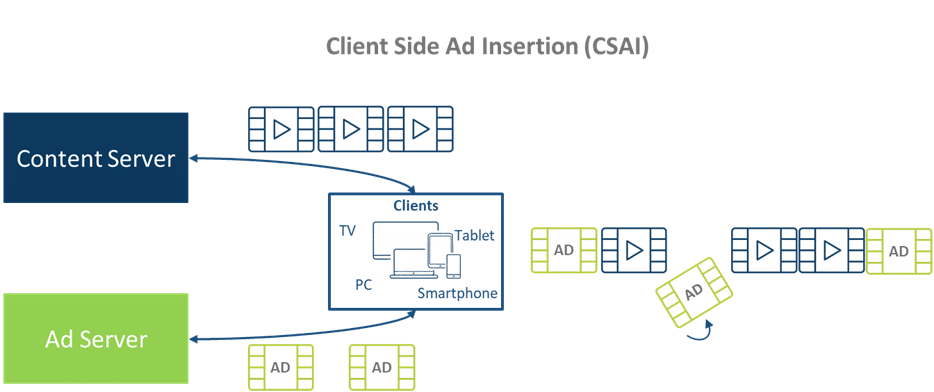
Within CSAI we additionally need to make the distinction between the two following approaches.
UI Level Advertisement
In the case of in-stream advertisements the ad creative is either placed before or after the main video or is inserted in the main video stream itself. In general, the implementation consists of a video player instance dealing with the main video and an instance dealing with the video ad playback and some logic to switch between these two sources. The so-called pre- and post-roll advertisements used in conjunction with video on demand can easily be implemented using client-side technology without affecting the user experience. However, inserting mid-rolls in VOD or doing ad insertion/replacement in the case of linear TV is more challenging and is typically implemented using server-side ad insertion solutions.
Server-Side Ad Insertion (SSAI)
Server-side ad insertion (SSAI) or dynamic ad insertion (DAI) use a network hosted service to insert ads dynamically into video streams, directly embedding ads into video content prior to content delivery toward the video device. This approach ensures that both the ad and video are delivered in exactly the same manner, resulting in an enhanced user experience.
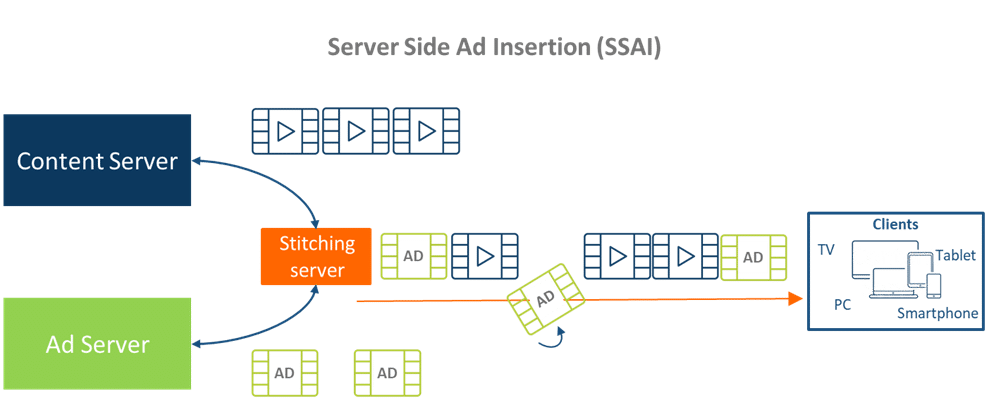
CSAI Versus SSAI?
Quite often there is a discussion around the merits and issues with either of these approaches. We at Broadpeak believe that there is room for both of these technologies to be used for monetizing TV with advertisements. Indeed, TV service providers can offer an ad inventory that enables advertisers to bring a coordinated marketing message at different moments during a subscriber’s journey on the TV service to command higher Cost Per Mille. Hence, using SSAI for in-stream advertisement, intelligently combined with CSAI-enabled out-stream advertising is the way forward.
Conclusion
Connected TV is rapidly gaining traction with advertisers, because it essentially combines the automated buying and selling of ad inventory from the digital display advertising space with the effectiveness of TV advertising. Although it is just in the beginning stages, we expect that programmatic buying will soon pick up to complement the programmatic delivery that is enabled in connected TV advertising. This may be implemented on either the client side or server side. In fact, we believe that both CSAI and SSAI have a role to play in fully monetizing TV services.
The next blog in the series, will elaborate on how strategic ad partnerships between TV service providers and broadcasters can unlock the massive, connected TV advertising potential.
The Target TV Advertising Blog Post Series:
Digital Ad, DAI and SSAI – Part 1/5
The Crumbling Cookies – Part 3/5
